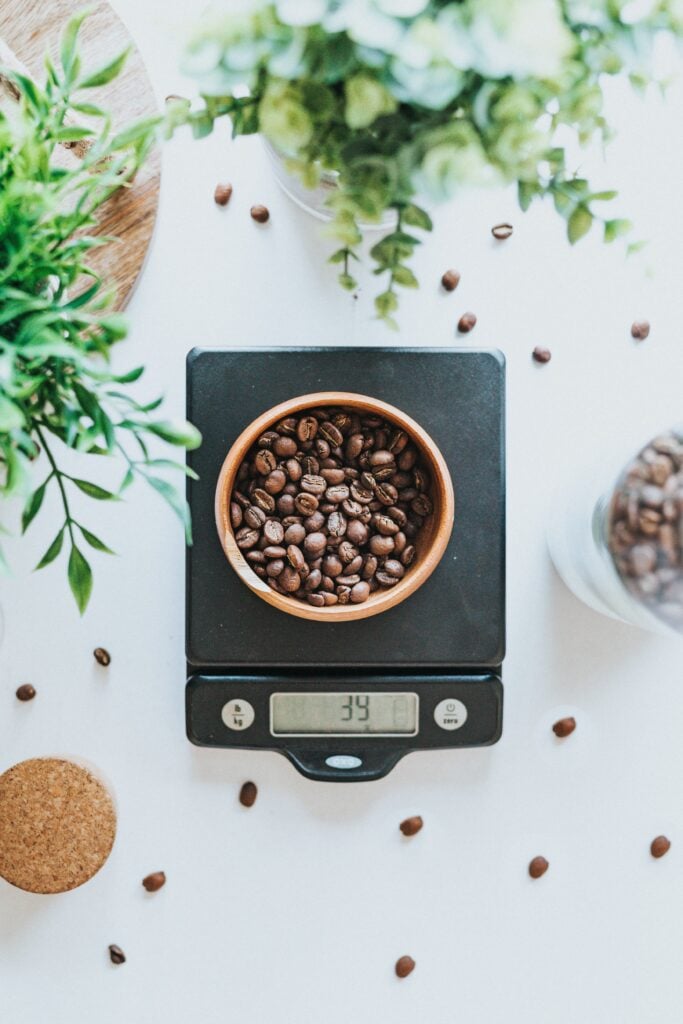Recently, I wrote a post about my favorite kitchen utensil: my digital food scale. If you missed it, you can check it out here!
Y’all. I do love a pretty KitchenAid, but it’s not my most favorite kitchen tool in the whole wide world.
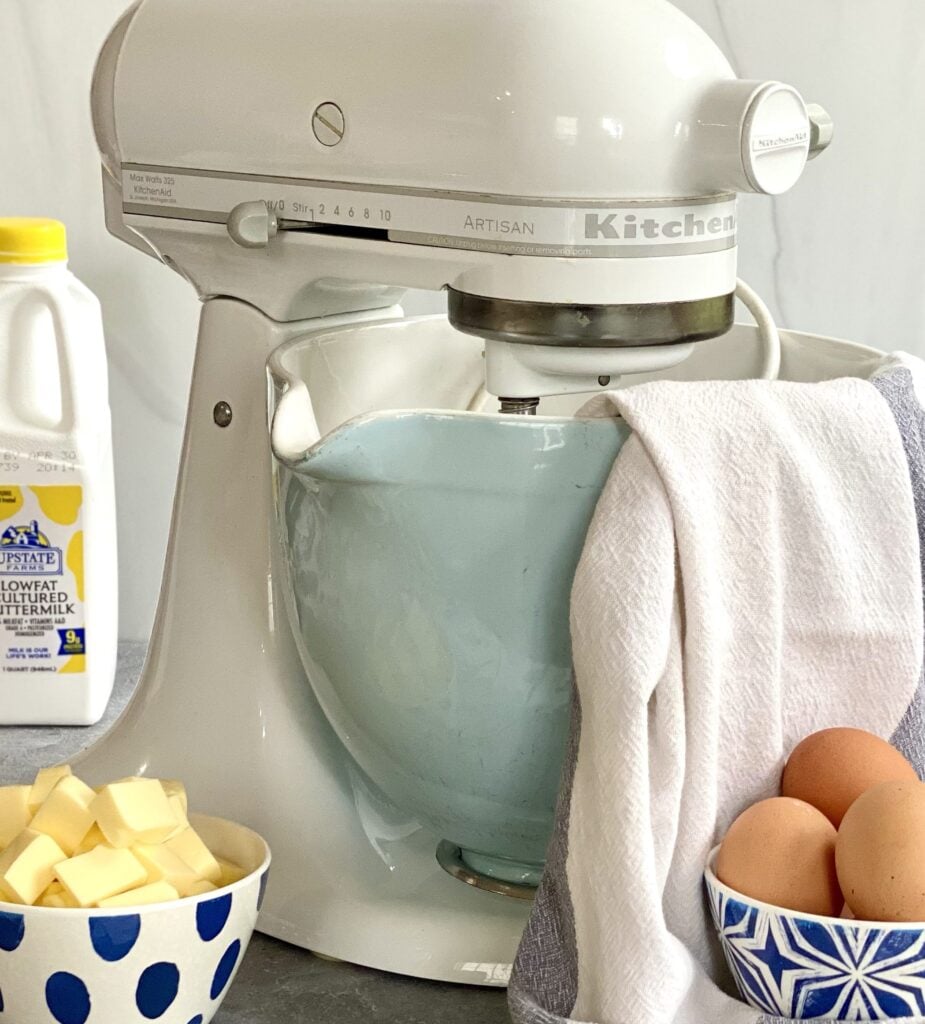
This post is a kind of companion to that post, to continue our walk down the path of baking enlightenment.
This post is for the “I can’t bake because it’s too hard” crowd. I see you and dedicate this one to you.
Want to become a baker in one baking session? Do you have one chance to execute a brand new recipe and need to get it right in order to avoid family ridicule? Then ditch the U.S. Customary Measurement System for measuring ingredients.
To break it down: to get better in one session, the best way to measure ingredients is to use the International System of Units.
Y’all right now:
The Metric System. The International System of Units is just a fancy, upgraded way of saying the Metric System.
I grew up saying the Metric System and that term is still widely used, so I’ll use it in this article. I cannot overstate how much and how quickly the Metric System will change your baking.
Why is this Important for Baking?
Be forewarned: this topic ignites my inner and outer supernerd, so feel free to skip to the section titled How to Measure Using the Metric System in Baking if you’re just here for the nuts and bolts of how to use metric measurement in baking. It’s all here for you!
It’s true that cooking and baking are very different kinds of way to prepare food. It’s also true that baking demands much more precision than cooking, and that that precision starts with how accurately you measure your ingredients. The margin for error is much slimmer for baking than it is with cooking.
If we start there, then we understand that the first best way to become successful with baking is to use tools that help measure ingredients most accurately.
In other words, the system with the smallest uniform measurement units gives the most accurate measurements for baking and leads to an immediate impact on your baking results. That, Friends, is the Metric system.
The demand for accurate measurement is the single biggest thing that frustrates new bakers. Especially people who are good cooks who are used to being able to spontaneously modify a recipe. (This was me.)
If you’re a new baker, you’ll do yourself a favor by letting go of that spontaneity for a bit. It’s humbling but I promise you’ll be able to resume tinkering once you know the basics.
In order to understand which measurement system you should use for baking, it’s useful to understand the differences between the two so that you can make a decision about which one is a more objectively accurate measurement system.
If you’re shook, I understand. When you grow up cooking and baking using U.S. Customary System (like I did), and you think that that system is absolute, it’s a bit of a shock to learn that you’ve been doing it the hard way (and unnecessarily so) your entire life.
Okay here we go.
The U.S. Customary System
The U.S. Customary System is an entire system of measurement that comes from –wait for it– Great Britain. After U.S. Independence, when the U.S. was getting on its feet, the leaders realized that they needed to formally adopt a system of weights and measures, mainly for manufacturing and trade.
Since the English colonists brought the British Imperial System when they originally arrived and colonized the country, that system was already established once the colonists gained their independence from Britain. So they kept it mostly the same and renamed it the “U.S. Customary System”.
That is to say, the U.S. Customary System is a holdover from a time of British rule. And, kicker, even the British left it behind, phasing it out in the mid 1960s.
The U.S. Customary System uses inches, feet, yards and miles to measure length. It uses ounces, pounds and tons to measure weight. And finally, the U.S. Customary System uses fluid ounces, cups, pints, quarts and gallons to measure volume.
For baking, the most common measurements from the U.S. Customary System are cups (volume) and ounces (weight).
What is the Metric System?
The Metric System is a standardized system of measurement that…most of the world uses.
Let me be clear: there are three whole countries on the entire planet that use some form of the British Imperial System.
The Metric System is a system of weights and measures that creates smaller units than the units created by the U.S. Customary System. While the U.S. Customary System uses ounces for weight measurement, the Metric System uses grams. There are about 28.4 grams in one ounce. So, using grams to weigh ingredients will give you a much more precise result.
In addition to using the gram for weight, the Metric System uses the meter for length, and the liter for volume.
Metric is so exact. So oddly comforting. Like a precise, meticulous hug.
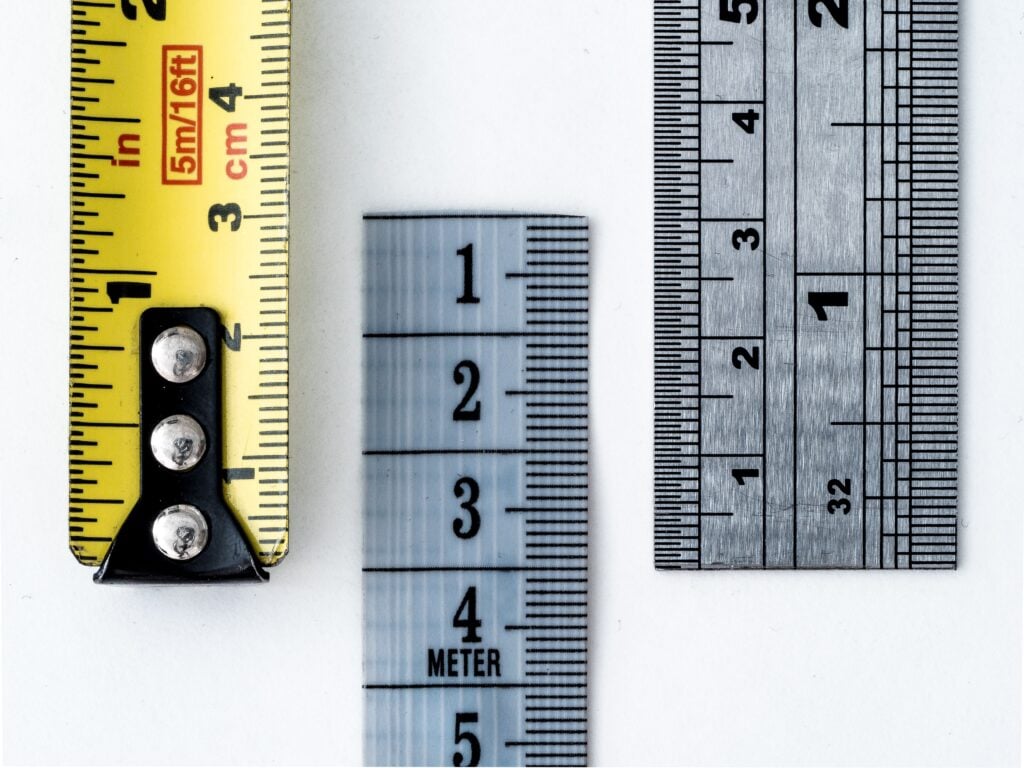
Most of the metric weight measurements you’ll see in modern recipes use grams. If you ever need a kilogram of an ingredient, you’re “doing the most” as my sister-in-law would say. This can happen easily if you’re scaling recipes to make more servings though!
Weight vs. Volume Baking
Bakers in the United States tend to use weight measurements (ounces, pounds) and volume measurements (cups) more than any other types of measurement. “Weight measurement” just means that you are actually using a digital kitchen scale to weigh the ingredient. “Volume measurement”, on the other hand, means the amount of space that an ingredient takes up in a container.
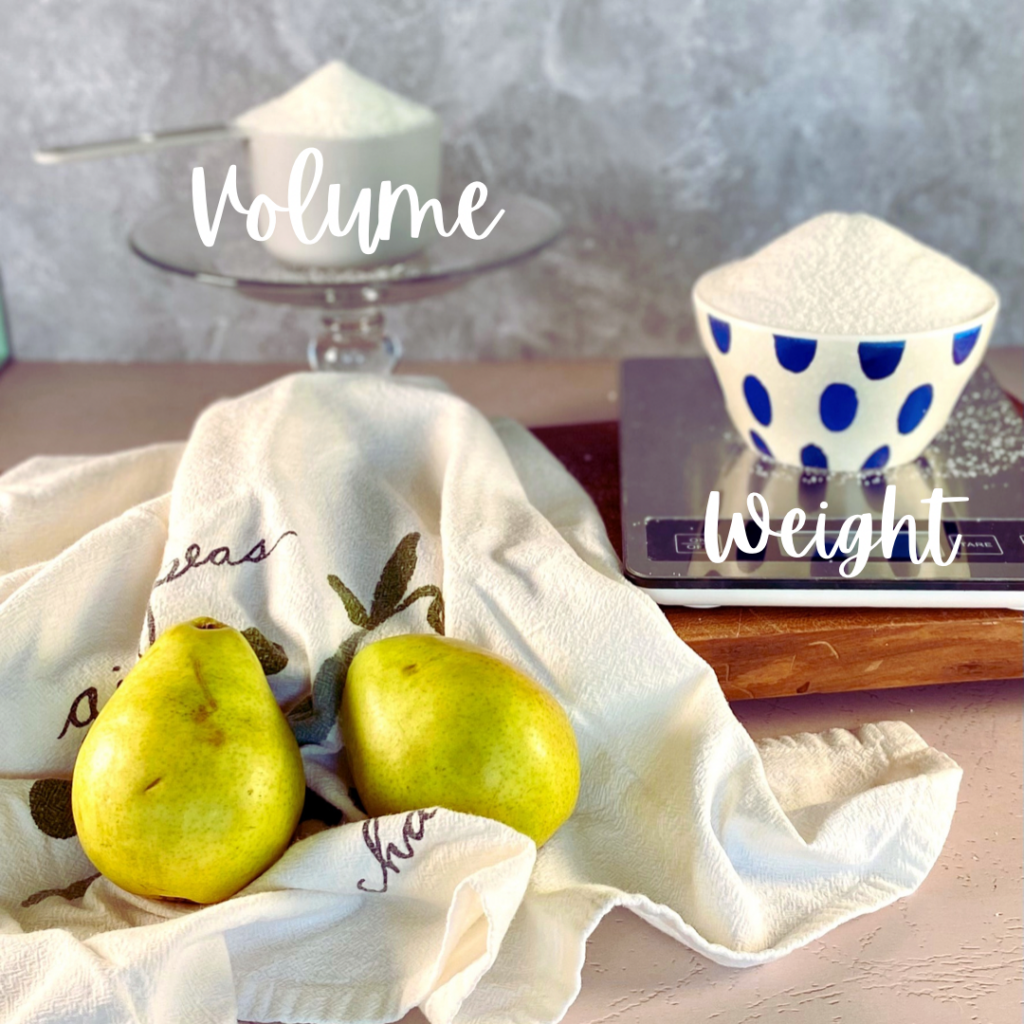
When you fill a measuring cup to the top with flour and then put that flour into your recipe, you’re using volume measurement. You’re allowing the shape and size of the vessel (the measuring cup) to determine the amount of the ingredient in the recipe. In other words, you are living on the edge.
Using weight measurements (ounces, pounds, grams) is a more accurate way of measuring ingredients, regardless of whether you choose to use the U.S. Customary System or the Metric System. When you weigh ingredients, you have complete control over how much of an ingredient goes into a recipe. Because the amount of an ingredient and its proportion to other ingredients will always impact the final product, weighing ingredients gives you much more control over the outcome.
Volume measurements are fickle and can leave you twisting in the wind if you don’t know what you’re doing. Shoot, even if you do know what you’re doing, volume measurements can take you down. Whether you’re a non-baker or a veteran baker, there’s just no way to know how much of an ingredient you’re using unless you weigh it.
Even a measuring cup is often not uniform. When you’re making a recipe that calls three cups of flour and you’re scooping flour out of a container, those three “cups” of flour could each vary by 30 grams or more.
Hello frustration. Nice to see you again.
So, long story short: measuring by weight leads to accuracy and consistency. If you want to use the U.S. Customary System, pounds and ounces are your best bet. For the Metric System, grams is your new best friend.
Enough with the history and math lessons. Let’s get to the good stuff.
How to Measure Using the Metric System in Baking
Well, first you need a tool. A handy dandy digital food scale scale is the right one for the job.
For a quick tutorial on how to use a digital kitchen scale when measuring ingredients, check out the video, below. For specifics about what the tare button means, as well as a visual for how to use a kitchen scale in real life, fast forward to about 1:10.
Once you’ve unboxed your scale, you’ll next need a recipe that’s written in metric units. For beginners, this is absolutely the best place to start. I’m noticing a wonderful trend in baking blogs lately; many of them are adding metric measurements to older recipes, which is super helpful for people who are just starting to bake.
For intermediate and advanced bakers who are working with recipes written using the U.S. Customary System, it’s easy to convert the ingredients into metric measurement! Note: conversions can be tricky, so this takes some practice and can require some minor tweaks to the amounts of ingredients to get the recipe just right. It’s well worth it in the end, though, since you’ll end up with a very reliable recipe that you can reproduce over and over again. (Just remember to write down your tweaks!)
For those of you interested in converting recipes from U.S. Customary to Metric measurement, a great resource is King Arthur Baking’s Ingredient Weight Chart. Note: there is some debate in the baking world about how many grams are in a cup of flour (120-130 grams) and a cup of sugar (195-210 grams). If you’re just starting with conversions, I’d ignore that debate completely and follow the guide.
Basically, get comfy with doing conversions first; with practice, you’ll figure out where you land in the bigger discussion.
What to Measure with Metric
Family. We don’t have to measure everything on this digital kitchen scale. But…
BUT…
There are some non-negotiables. If I haven’t been clear so far, let me be clear right now: I always, ALWAYS weigh flour, butter, cocoa powder, and sugar (granulated and confectioner’s) on my digital kitchen scale. These ingredients can be absolute menaces to society and have the greatest ability to cause gremlin mischief in just about any recipe. It’s important to get these amounts correct.
Liquids are a different story, since technically liquids are measured according to volume and not weight (using milliliters). But I sometimes my digital kitchen scale to weigh liquid ingredients as well, especially if all of my liquid measuring cups are dirty.
Hey, baking is still a very messy business and sometimes I just don’t want to stop mid-stream and wash a liquid measuring cup. #RealTalk #BakersLife
Teaspoons and tablespoons are still commonly used worldwide for baking. Just remember to keep them level! Some recipes do measure things like baking powder and baking soda in grams, though. I would recommend following those instructions if the recipe developer wrote it that way.
Why Use Metric Measurement?
Great question. Here are five reasons why I made the switch to Metric weight measurement from U.S. Customary weight measurement:
- It improves accuracy. When you use metric weight measurement, the units (grams) are the most exact in the measurement game. Grams are more exact than ounces because the increments for grams are smaller. So, the amount of an ingredient that you put into a recipe is literally exactly the amount that the recipe writer intended.
- You’ll build consistency. When you use metric measurement consistently, you’ll start to see the same great results every time you bake. You’ll learn what to expect from a recipe and you’ll be able to execute it consistently every time. Which leads to my next point…
- It improves confidence. When you use metric measurement consistently, you’ll gain confidence when you repeatedly start to see beautiful finished products. Like a clean shot in golf or a hot shooting hand in basketball, once you know you can do it, you want to do it over and over again. You can be confident that you’ll get the result that the recipe developer intended (unless you burn it up in the oven…but that doesn’t have anything to do with measuring).
- It saves money. Left to our own devices, we tend to be very heavy-handed with ingredients. Metric takes the guesswork out of measuring and ensures that you only use what you need and no more. After a time, those extra grams of sugar really add up!
- It is easy. You just need a kitchen scale and the will to bake good food.
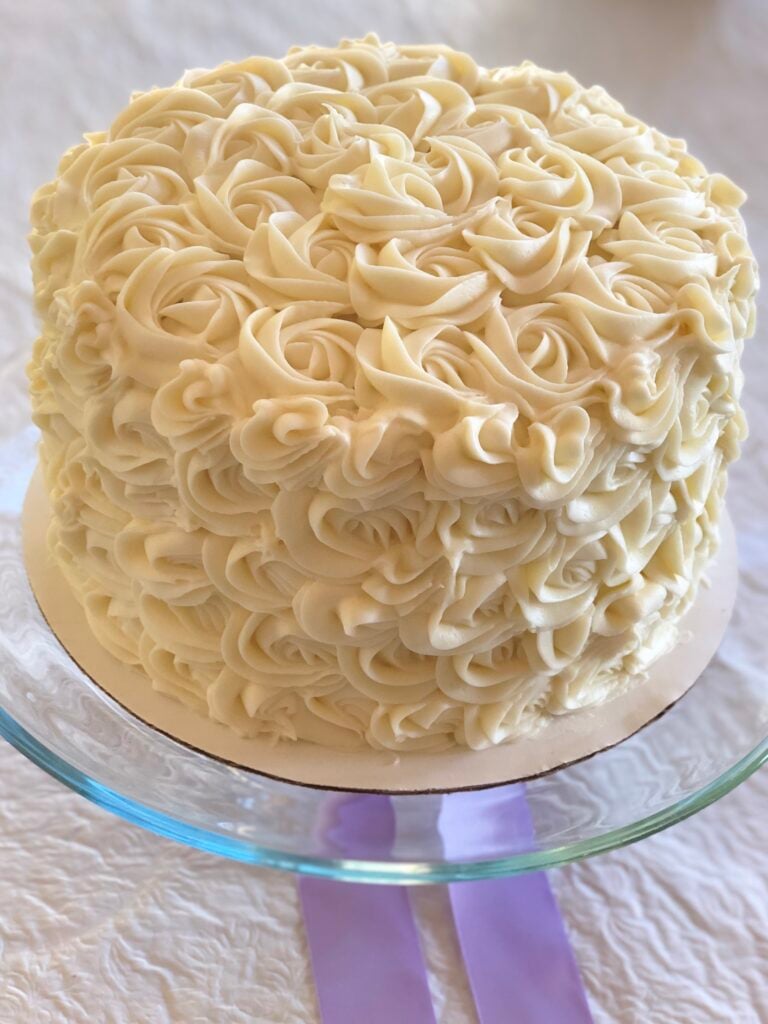
I hope this post leaves you feeling knowledgeable and empowered and looking forward to your next baking project! Don’t forget to subscribe while you’re here so that you can get notified of new posts as soon as they go live!



